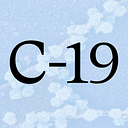To Open the US Economy, We Need a Contact Tracing Workforce of 180,000
Today, along with 15 others, I published a detailed proposal to help the country move forward
In early March, I sent a note to someone at Google and called a board member there to ask if their phones could be used to help people trace their whereabouts to help limit the spread of Covid-19. At the time we had dozens of cases. Hundreds of cases seemed like it was in the distant future. I was telling governors I thought the cases would be eventually in the tens or hundreds of thousands. I actually remember cutting the word millions because no one would find it credible.
It already seemed impossible that we would do as well as South Korea. “Italy is our future”, someone who had studied the numbers told me. The only path to hold the numbers down was if people stopped it from spreading.
So we launched the #StayHome campaign. It felt like the most immediate, but almost desperate, step. No state had implemented any lockdown orders. Our letter asked people to take things into their own hands and policymakers to follow. To do this, I reached out to signatories to get people’s attention. And people who understood social media and media. And we relentlessly called governors.
Things happened fast. Cases grew. We were asking people to do something that would take weeks to begin to work.
“The public won’t go for it.”
“This isn’t China.”
“No one will voluntarily do this.”
I was told all of these things by more experienced people . All I could think was; “We don’t have a choice.”
The question for Google was the wrong one. I knew one person who knew the CEO’s of Google and Apple. Most people had one of those phone systems. “Would they work together?” This person said they would try.
Yes! Technology would rescue us! I so wanted to believe that. I was looking for silver bullets. If I’m honest, I was looking for the feeling of accomplishment. But I was lying to myself.
I’ve since talked to, and heard from, many tech firms and app builders including very capable people and companies like Salesforce. Really sophisticated people. Cool technology may be part of the answer, but I started to doubt. Even if the technology worked, we had a problem. Math.
The math was simple. Mandatory or voluntary? Opt-in or opt-out? I needed to know where the public was. I called the best survey people I knew. They agreed to drop a survey. While I waited, first I did something pointless, a Twitter quiz:
We got the results of the poll last week. People were slightly comfortable with these apps, but with some political divides. People could be persuaded, but a sizable majority could not.
It was clear that these apps would have to be opt-in, not opt-out — the tech firms were clearly sensitive to privacy concerned. 40% of people opting-in felt optimistic. And if the infected person and their contact both needed to opt-in, that could make the effectiveness only 16%.
Talking to friends working on this problem made it clear we would need people, a lot of people. That took money, and the states were out of money. The Federal government would need to help. And Congress was working on the Paycheck Protection Program (PPP). Time to act.
We ended up sending the letter below to Congress at 5am Eastern:
The major pieces:
- A national 180,000 person contact tracing workforce
- $4.5 billion to allow people to voluntarily isolate at a hotel if there’s no room at home
- $30 billion to replace income for people who had to isolate
- Engaging primary care physicians
Letters like this are put together for two different reasons; 1) send a message or 2) get it done. We wanted to get it done which meant that we needed to have details that worked, a broad non-partisan credible group, and a clear rollout plan.
Some of the most notable and respected people who have worked on infectious diseases and pandemics the country lent their expertise and signed on; Tom Inglesby, Larry Brilliant, Farzad Mostashari, Mike Osterholm, and Joshua Sharfstein.
Public health and health care experts like, Dr. Leana Wen and Eric Topol. And experts from different Administrations like Bob Kocher, Mark McClellan, Bill Frist, M.D., Mike Leavitt, Atul Gawande, Vivek Murthy, and Juliette Kayyem all reviewed, added and signed on.
Importantly, Scott Gottlieb agreed to co-lead the letter and brought his expertise (and political balance). He ran the FDA in this Administration and did a great job. Democrats and Republicans in Congress, and the White House, trust him. I have found little I disagree with him on.
I called Senators, House members, and the White House and discussed, not only the content of the proposals, but the timing as well. Sending this over in the middle of PPP could damage it. $25 billion was going into testing. All the contact tracing in the world wouldn’t matter without testing.
So we waited. We took feedback. Civil liberties were important to some. Fiscal responsibility to others. Equity to me. We wanted it done. A federal-state partnership made the most sense.
Case counts were unpredictable so we built a mechanism to recover unspent money. There were estimates higher than ours and lower. We just wanted ours to be the straight story and avoid land mines. Congressional appropriations committees will want to see the work. Committees will want to be briefed. In any legislation there are lots of priorities — family leave, small business support, stimulus, the disability community. All are important. All cost money.
We broke the story bright & early on NPR:
Why review the backstory? Because these processes are usually invisible to the public — and people with moneyed-interests usually have more access. But the nice thing about this environment is policymakers do want the best advice, and it’s a rare time to put politics aside.
Pulled from my daily COVID-19 updates on Twitter

